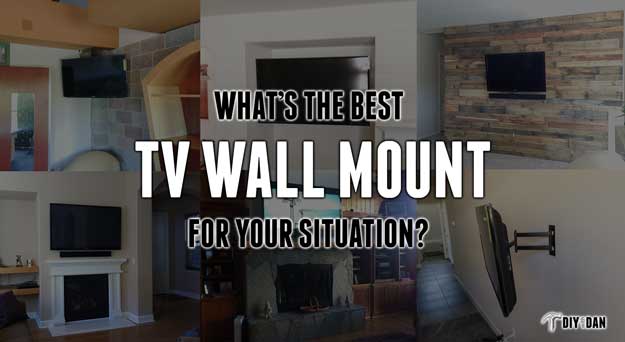There are three main things you need to consider when choosing a TV wall mount.
- What style of mount do you need?
- Do the VESA Dimensions of your TV match the mount?
- Can the mount support the weight of your TV?
There are hundreds of TV wall mounts to choose from, and choosing the right one will make it easier to install and improve your TV watching experience.
So in this article, I’m going to talk more in depth about each of the three things I mentioned above. I’ll also cover a few more considerations and some tips for saving money.
If you just want to see which TV wall mounts I recommend, scroll to the bottom.
Let’s get started…
#1 – Which Style of TV Wall Mount Is Best for Your Situation?
There are four main TV wall mount styles:
- Flat Mounts – The simplest type of mount. These mounts attach your TV flat to the wall.

- Tilt Mounts – These are similar to flat mounts except they give you the ability to tilt your TV down. They are good for when you mount your TV high on the wall.
- Articulating Mounts – These are TV wall mounts that include an articulating arm. They allow you to pull the TV away from the wall, rotate it side to size, swing it side to side, and often give you the ability to tilt up and down as well. They are usually the most expensive.

- Pull-down Mounts – These are designed for mounting your TV high on the wall above a fireplace. They give you the ability to pull the TV down and out for viewing and then move it back up so it sits neatly against the wall.
In most cases all you need is a tilt mount or a flat mount. These are the lowest cost options and the easiest to install. You can pick one up for at little as twenty bucks.
However, in some cases you might need additional functionality.
If you are mounting the TV high on the wall above a fireplace, then you might consider a pull-down mount so you can pull the TV down to have a better viewing angle. These are pretty unusual though, since most people go with a tilt-mount above the fireplace and just deal with looking up at it.
Articulating mounts are another common mount option that is sometimes required. Here are some scenarios that may require an articulating mount:
- If you are mounting your TV in a corner.
- If you are mounting your TV in a recessed section of the wall or in a cabinet and you want the TV to set further away from the wall.
- If you need to access the connections behind the TV often.
- If you need to rotate your TV side to side for a better viewing angle or so you can watch your TV from different sides of a room at different times.
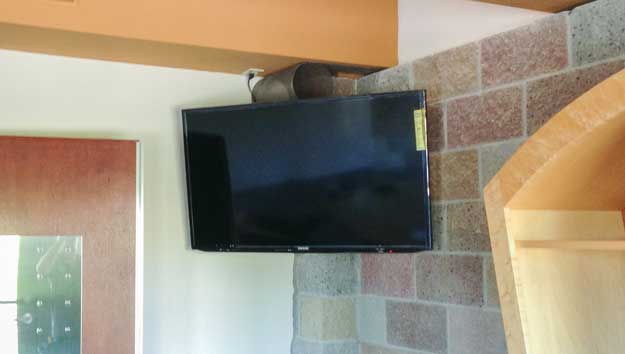
Unless there is a clear reason to get an articulating mount or a pull-down mount, I recommend going with a tilt mount or a flat mount because they are less expensive, easier to install, and use less materials.
#2 – Do the VESA dimensions of your TV match the mount?
All modern TV’s have four screw holes on the back of the TV that are designed to connect to wall mount brackets.
The VESA dimensions include two dimensions: the horizontal distance between the screw holes and the vertical distance between the screw holes.
VESA dimensions are measured in millimeters.
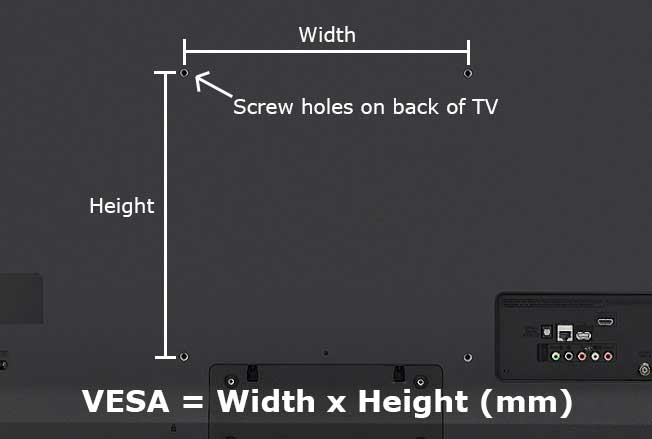
To find the VESA dimensions for your TV just do a quick google search that includes your TV model number and the phrase “VESA dimensions.” Or, measure the distance between the mounting screw holes on the back of your TV with a tape measure.
Once you know the VESA dimensions of your TV, you can select a mount. TV wall mounts typically fit a wide range of VESA dimensions, so all you need to do is make sure your TV is within that range.
This is all pretty standardized and most TV wall mounts will likely work with your TV, but it’s always worth double checking.
#3 – Can the mount support the weight of your TV?
All TV wall mounts have a weight rating. So simply find out how much your TV weighs and check it against the weight rating of the mount.
Most newer TV’s are relatively light and this won’t be a problem. But if you’re mounting an older TV or a larger TV it’s likely much heavier and you’ll want to pay special attention here.
The weight of the TV is especially important when using an articulating or pull-down mount, since these are required to deal with larger forces.
If you’ve found a TV Wall Mount that checks all these boxes, go ahead and pick it up!
Where should you buy your TV Wall Mount?
You could just go to a local Home Depot, Best Buy, Walmart, or Target to pick up a mount if you need one today.
However, TV wall mounts are far less expensive when you buy them online. For example, a typical tilt mount at Best Buy will run you about $100, but you can find one that will work just fine for $25 on Amazon.
If you just need a flat mount, then I recommend just picking this one up right here.
Other Things to Consider When Choosing a TV Wall Mount In Case You are a Perfectionist
Just in case you want to be really sure you get the absolute best possible TV wall mount for your situation, here are a few more things to consider…
#1 – Do you need a low-profile TV wall mount?
If your TV sticks out too far from the wall, it can look really bad. It will often allow you to see behind the TV and all of the wires.
So in many cases it will look a lot better if you get a low profile TV wall mount.
In general, flat TV wall mounts have the lowest profile. Tilt mounts stick out a bit further, and articulating mounts stick out even further because there has to be room for the articulating arm to collapse.
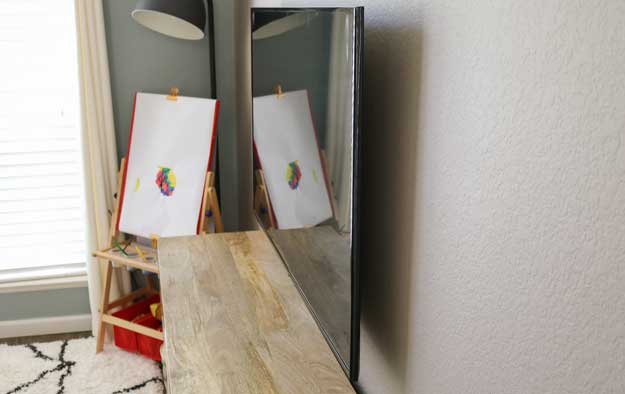
And of course, even between different manufactures, certain tilt mounts will stick out further from the walls than others.
So, if you think this is important for your installation then be sure to find a low-profile TV wall mount.
#2 – Are you going to be installing your TV yourself?
Some TV wall mounts give you the ability to adjust how level the TV is after you install it. This is especially helpful if you aren’t super handy and will be mounting it yourself (which I show you how to do in this step by step video).
The cheaper TV wall mounts don’t give you that ability so you’ll have to mount it perfectly level or deal with a crooked TV. It’s not that hard to get it level, and again, I show you how to do it in that video I linked to above.
#3 – Are you mounting the TV to a recesses section in the wall or inside of a cabinet?
In some cases you will be mounting your TV in a mounted cubby in the wall or a cabinet and you’ll want it to set away from the wall so the TV is flat with the front of the cabinet or wall.
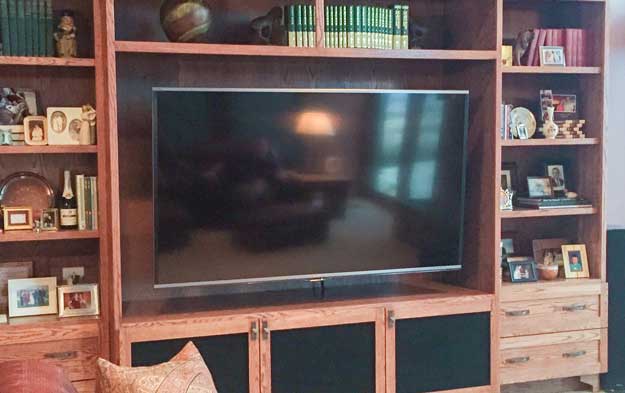
In this case, you’ll want to get an articulating wall mount with a long reach. Make sure it is at least as long as you need it to be so it sits out far enough.
Recommended TV Wall Mounts (with links)
Here are the mounts I recommend for each category with links to each.
The links below are affiliate links. That means I receive a small commission if you click on them and buy (which I really appreciate). This does not cost you anything additional and it allows me to put out more free information like this.

